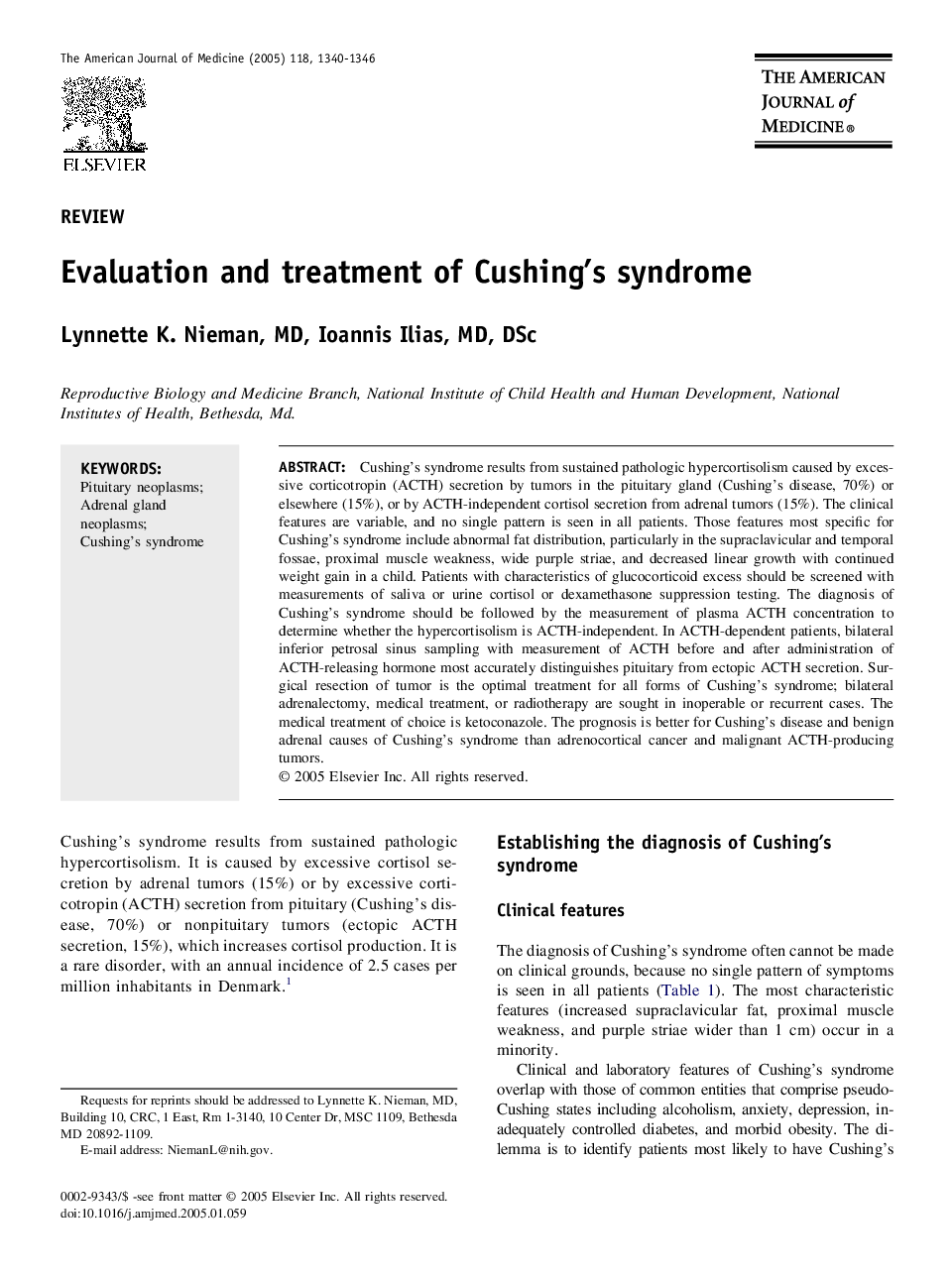| Article ID | Journal | Published Year | Pages | File Type |
|---|---|---|---|---|
| 9929130 | The American Journal of Medicine | 2005 | 7 Pages |
Abstract
Cushing's syndrome results from sustained pathologic hypercortisolism caused by excessive corticotropin (ACTH) secretion by tumors in the pituitary gland (Cushing's disease, 70%) or elsewhere (15%), or by ACTH-independent cortisol secretion from adrenal tumors (15%). The clinical features are variable, and no single pattern is seen in all patients. Those features most specific for Cushing's syndrome include abnormal fat distribution, particularly in the supraclavicular and temporal fossae, proximal muscle weakness, wide purple striae, and decreased linear growth with continued weight gain in a child. Patients with characteristics of glucocorticoid excess should be screened with measurements of saliva or urine cortisol or dexamethasone suppression testing. The diagnosis of Cushing's syndrome should be followed by the measurement of plasma ACTH concentration to determine whether the hypercortisolism is ACTH-independent. In ACTH-dependent patients, bilateral inferior petrosal sinus sampling with measurement of ACTH before and after administration of ACTH-releasing hormone most accurately distinguishes pituitary from ectopic ACTH secretion. Surgical resection of tumor is the optimal treatment for all forms of Cushing's syndrome; bilateral adrenalectomy, medical treatment, or radiotherapy are sought in inoperable or recurrent cases. The medical treatment of choice is ketoconazole. The prognosis is better for Cushing's disease and benign adrenal causes of Cushing's syndrome than adrenocortical cancer and malignant ACTH-producing tumors.
Related Topics
Health Sciences
Medicine and Dentistry
Medicine and Dentistry (General)
Authors
Lynnette K. MD, Ioannis MD, DSc,
